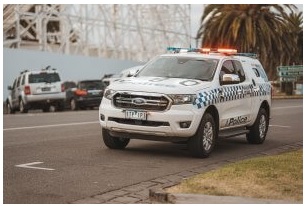The Australian Institute of Criminology recently released a study exploring the viability and utility of predictive policing techniques in an Australian context. Titled, 'Predictive policing in an Australian context: Assessing viability and utility' the study's authors were Daniel Birks, Michael Townsley and Timothy Hart. It examines the spatio-temporal patterns of burglary, theft of motor vehicle, and theft from motor vehicle offences in three distinct local government areas in Queensland.
In this post, we will explore the key findings of the study and consider the potential implications of predictive policing for law enforcement in Australia.
What is predictive policing?
Predictive policing is a technique that uses mathematical algorithms and data analysis to identify areas where crimes are likely to occur in the future. The idea behind predictive policing is to proactively deploy police resources to prevent crime before it happens. The technique's foundation is the theory that crimes exhibit spatio-temporal patterns, meaning that they occur in certain locations at certain times.
Key Findings on Predictive Policing in Australia
The study used crime data from the Queensland Police Service to explore and assess the viability and utility of predictive policing techniques. The researchers focused on three distinct local government areas and analysed spatio-temporal patterns in burglary, theft of motor vehicle and theft from motor vehicle offences.
The study found that predictive algorithms worked just as well, or even better than, the retrospective method of crime mapping, while using less data.

Examining the Pros and Cons of Predictive Policing
The potential benefits of implementing predictive policing in Australia include a reduction in crime rates and a more efficient use of police resources.
However, there are also potential drawbacks to implementing predictive policing in Australia.
One concern is that the technique could perpetuate biases in the criminal justice system. Predictive policing algorithms rely on the quality and accuracy of the data used to train them. If the data is biased, the algorithms will also be biased. As was the case with the Suspect Target Management Program (STMP) used by the NSW Police, consequently leading to over-policing in certain communities.
Further, there also may be privacy implications of collecting and analysing large amounts of data.
NSW Police's Secret Blacklist was a Form of Predictive Policing
NSW Police have already implemented predictive policing tactics by using the Crime Severity Index to create a secret blacklist consisting of individuals handpicked by the police.
NSW Police's secret blacklist, The Suspect Target Management Program (STMP) came under fire last year for its racially discriminatory and likely unlawful pre-crime powers.
The STMP is a secret NSW Police policy that police say are "designed to reduce crime among high risk individuals". The policy allows police to conduct random personal searches and home visits at all hours of the day to anyone on the list. Instead of targeting serious offenders, the STMP disproportionately targets young children and especially young First Nations children.
The STMP has been in operation since the early 2000s. Since then, there has been little transparency. It is wholly unclear what the criteria for inclusion on the list is and how police allocate risk categorisation. Further, police target a person without even formally notifying that person that they are on the list.
Weighing the Options for Policing in Australia
The study conducted by the Australian Institute of Criminology provides valuable insights into the viability and utility of predictive policing techniques in Australia.
Given the problematic consequences of the STMP, Australia will need to carefully consider implementing predictive policing.

